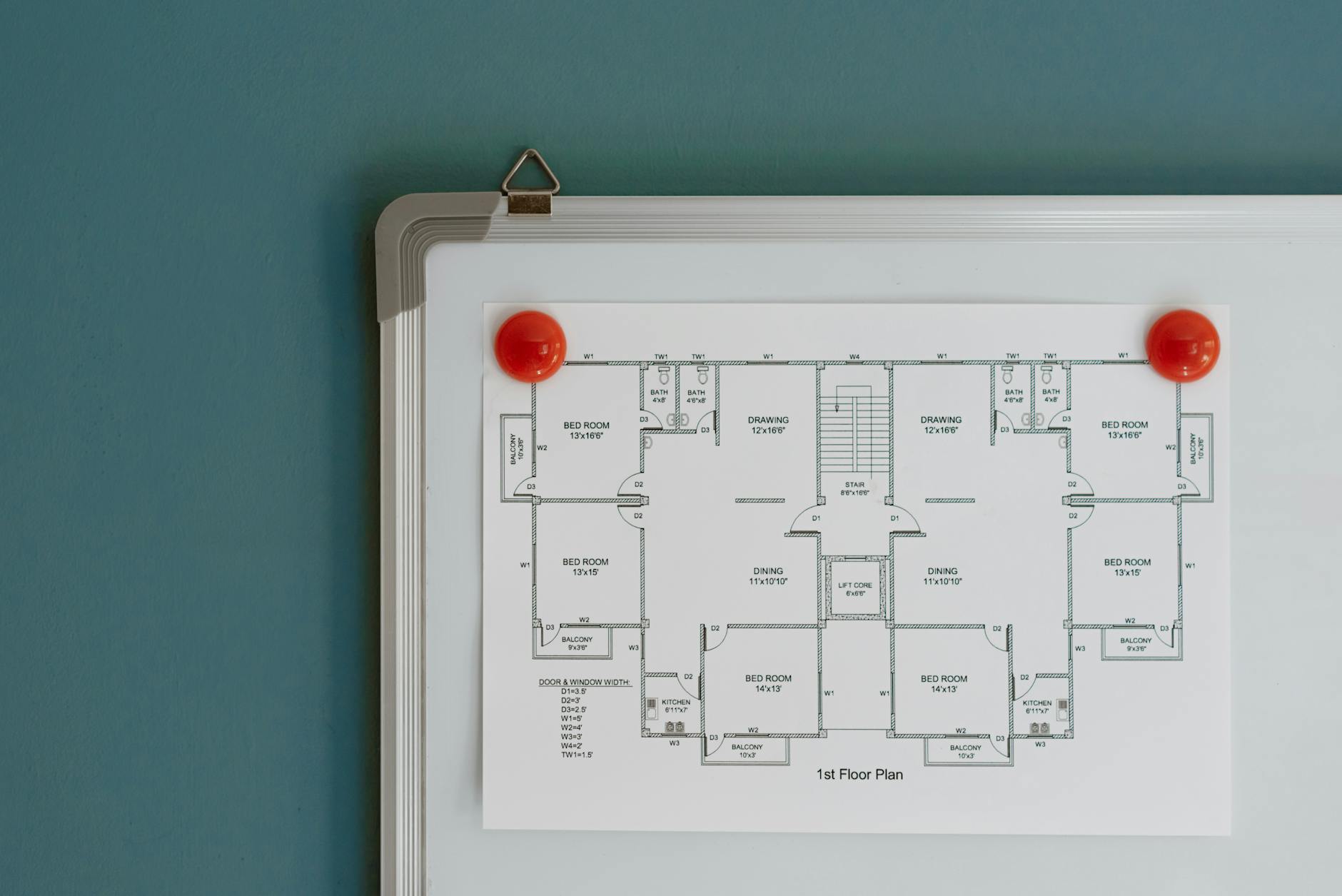
Are you aspiring to become a great architecture student? Look no further! In this blog post, we will provide you with valuable tips on how to excel in your architectural studies. Whether you are just starting your academic journey or looking to enhance your skills, these insights will guide you towards success. From effective time management techniques to honing your design abilities, we have got you covered. So, let’s dive in and discover the secrets to becoming a standout architecture student.
Develop Strong Design Skills
Design skills are essential for any aspiring architecture student. By honing your design abilities, you’ll be able to create innovative and visually striking architectural solutions. In this section, we’ll explore four key aspects of developing strong design skills: understanding the principles of design, studying architectural styles and history, practicing sketching and drawing, and experimenting with 3D modeling software.
Understand the Principles of Design
To become a great architecture student, it’s crucial to have a strong grasp of the principles of design. These principles form the foundation of successful architectural compositions. They include elements such as balance, proportion, rhythm, scale, and harmony. By understanding how these principles work together, you can create aesthetically pleasing and functional designs.
Study Architectural Styles and History
Studying architectural styles and history is invaluable for broadening your architectural knowledge and inspiring your design ideas. Familiarize yourself with different architectural movements, such as Ancient Greek, Gothic, Renaissance, Modernism, and Postmodernism. By examining iconic architectural works and understanding the historical context behind them, you can gain insight into various design approaches and incorporate them into your own projects.
Practice Sketching and Drawing
Sketching and drawing are fundamental skills that allow architects to express their ideas visually. Develop the habit of regularly sketching and drawing architectural forms, objects, and spaces. By practicing these techniques, you’ll improve your ability to convey your design concepts and communicate with clients, colleagues, and professors. Remember to experiment with different perspectives, shading techniques, and line weights to add depth and detail to your drawings.
Experiment with 3D Modeling Software
In today’s digital age, 3D modeling software has become a powerful tool for architects. By mastering software like AutoCAD, SketchUp, or Revit, you can create realistic and intricate virtual models of your designs. These tools enable you to visualize your ideas in three dimensions, explore different material finishes, and even simulate lighting conditions. Embrace the opportunities offered by 3D modeling software to enhance your design process and create captivating architectural presentations.
Remember, developing strong design skills requires continuous practice and exploration. Engage in hands-on projects, collaborate with fellow students, and seek feedback from professionals to refine your abilities. By immersing yourself in the world of architecture and committing to improving your design skills, you’ll be on your way to becoming a successful architecture student.
 (Photo by Tatiana Fet)
(Photo by Tatiana Fet)
 (Photo by Pixabay)
(Photo by Pixabay)
Cultivate Time Management Skills
Time management is a crucial skill for any architecture student. With numerous assignments, projects, and deadlines to juggle, having effective time management strategies in place can help you stay organized and excel in your studies. Here are some tips to cultivate your time management skills:
1. Create a Study Schedule
Setting up a study schedule is the first step toward efficient time management. Allocate specific time slots for studying, attending classes, and working on assignments. By having a structured plan, you can ensure that you devote sufficient time to each task without feeling overwhelmed. Consider using digital or physical calendars, planners, or productivity apps to help you stay on track.
2. Prioritize Tasks and Deadlines
Prioritization is key when it comes to managing your workload effectively. Identify the most important tasks and deadlines and tackle those first. This will help you focus on what needs immediate attention and prevent last-minute rushes or incomplete work. By prioritizing, you can allocate your time and energy more effectively, ensuring that you meet all your commitments.
3. Break Down Projects into Manageable Parts
Large projects can be daunting, but breaking them down into smaller, manageable parts can make them more approachable. Create a clear outline or checklist for each project, breaking it down into smaller tasks. By dividing the project into smaller steps, you’ll have a clearer idea of what needs to be done and can work on it incrementally, reducing the chances of feeling overwhelmed.
4. Avoid Procrastination
Procrastination is the enemy of effective time management. It’s easy to get distracted or put off tasks, but delaying work only leads to increased stress and reduced productivity. Combat procrastination by setting realistic deadlines for yourself and breaking your work into smaller, more manageable chunks. Additionally, eliminate distractions such as social media or unnecessary web browsing during your designated study or work periods.
Remember, developing strong time management skills takes practice and discipline. By creating a study schedule, prioritizing tasks and deadlines, breaking down projects, and avoiding procrastination, you can become a more efficient and successful architecture student.
Build a Strong Foundation in Mathematics
Mathematics forms the backbone of architectural education and practice. By developing a strong foundation in mathematics, you not only enhance your problem-solving abilities but also unlock a world of possibilities in architectural design and analysis. In this section, we will explore key aspects of building a robust mathematical skill set for aspiring architects.
Master Geometry and Trigonometry
Geometry and trigonometry serve as fundamental tools in architectural design. Understanding geometric principles and trigonometric functions enables you to analyze and create precise architectural drawings, blueprints, and three-dimensional models.
By mastering geometry, you can accurately calculate angles, lengths, and proportions, ensuring that your designs are aesthetically pleasing and structurally sound. Trigonometry empowers you to tackle complex spatial relationships, such as determining the height and distance of objects, essential for creating well-designed and functional spaces.
Learn Calculus and Physics Concepts
Calculus and physics concepts play a vital role in architectural analysis and structural design. Calculus enables you to model and analyze continuous changes, such as the flow of forces within a structure or the spatial distribution of lighting. Understanding differential and integral calculus helps architects optimize structural efficiency and energy consumption.
Moreover, a solid grasp of physics principles helps architects design buildings that withstand various forces, such as gravity, wind, and seismic activity. By comprehending concepts like Newton’s laws of motion and the behavior of materials under stress, you can create safe and resilient structures that meet the highest standards of durability and stability.
Apply Mathematics in Architectural Design
The integration of mathematics in architectural design goes beyond calculations and measurements. Mathematics serves as a creative tool that enables architects to explore and express innovative design concepts. By leveraging mathematical principles, such as symmetry, proportion, and fractal geometry, architects can create visually appealing and harmonious designs.
Additionally, mathematical algorithms and computational tools can generate intricate and complex forms that push the boundaries of architectural imagination. From parametric design to digital modeling, mathematics provides architects with the means to bring their visions to life in extraordinary ways.
Develop Quantitative Analysis Skills
In addition to design, mathematics plays a crucial role in the analysis and evaluation of architectural projects. Strong quantitative analysis skills allow architects to assess the environmental impact, energy efficiency, and cost-effectiveness of their designs. By employing mathematical modeling, architects can optimize building performance, minimize resource consumption, and enhance sustainability.
Quantitative analysis also aids in evaluating structural integrity, acoustics, and lighting design. Architects who can effectively interpret numerical data and apply statistical methods possess a competitive advantage in creating high-performing and environmentally responsible buildings.
 (Photo by Karolina Grabowska)
(Photo by Karolina Grabowska)
By building a solid foundation in mathematics, aspiring architects equip themselves with the necessary tools to excel in their profession. From mastering geometry and trigonometry to applying advanced mathematical concepts, mathematics serves as a guiding force in creating innovative designs and ensuring the functionality and durability of architectural projects. Developing strong quantitative analysis skills allows architects to make informed decisions and achieve sustainable and impactful architectural solutions.
Enhance Communication and Presentation Skills
Developing strong communication and presentation skills is essential for success as an architecture student. Effective communication allows you to convey your ideas clearly and persuasively, while polished presentation skills enable you to effectively showcase your work. In this section, we will explore some practical tips to enhance your communication and presentation abilities.
Practice Effective Verbal Communication
Verbal communication plays a crucial role in architecture, whether you’re collaborating with peers, presenting ideas to clients, or participating in design critiques. Here are some tips to improve your verbal communication skills:
- Active Listening: Actively listen to others during discussions and engage in meaningful conversations. Pay attention to details, ask relevant questions, and provide thoughtful responses.
- Clarity and Conciseness: Articulate your ideas clearly and concisely. Structure your sentences in a logical manner and avoid unnecessary jargon. Use language that is easily understandable by both experts and non-experts in the field.
- Confidence and Poise: Build confidence in expressing your ideas. Maintain good posture, use a clear and confident tone of voice, and be mindful of your body language.
Improve Written Communication Skills
In addition to verbal communication, strong written communication skills are necessary for success as an architecture student. Here are some strategies to enhance your written communication abilities:
- Grammar and Spelling: Pay attention to grammar, punctuation, and spelling in your written assignments. Proofread your work carefully or consider using proofreading tools to ensure accuracy.
- Clarity and Organization: Clearly convey your thoughts and ideas in a well-organized manner. Use headings, subheadings, and bullet points to structure your written work effectively.
- Concise and Effective Writing: Practice writing concisely and eliminating unnecessary words. Use a clear and professional tone, avoiding overly complex language.
Develop Presentation and Public Speaking Abilities
As an architecture student, you will frequently need to present your designs and projects to various audiences. Here are some tips to develop your presentation and public speaking skills:
- Preparation is Key: Prepare your presentations well in advance. Practice your delivery and anticipate potential questions or challenges.
- Visualize and Demonstrate: Utilize visual aids, such as sketches, diagrams, or digital renderings, to enhance your presentations. Visuals can help effectively convey your design concepts and engage your audience.
- Engage the Audience: Maintain eye contact, speak clearly, and use appropriate gestures to engage your audience during presentations. Incorporate storytelling techniques to make your presentations more compelling.
Utilize Visual Aids Effectively
Visual aids are powerful tools for architectural presentations. They help to communicate complex ideas and enhance understanding. Consider the following tips:
- Use Appropriate Graphics: Incorporate relevant images, diagrams, and charts to support your verbal explanations. These visuals should be clear, visually appealing, and directly related to your topic.
- Balance Text and Visuals: Avoid overwhelming your audience with too much text on slides. Use bullet points or brief captions to highlight key points, and let the visuals do the talking.
- Keep it Simple: Simplicity is key in architectural presentations. Avoid cluttered slides and complicated graphics that may distract or confuse your audience. Focus on delivering your message clearly and succinctly.
Remember, enhancing your communication and presentation skills is an ongoing process. Continuously practicing and seeking feedback will help you become a great architecture student and an effective communicator in the field.
 (Photo by Pixabay)
(Photo by Pixabay)
Foster Collaboration and Networking
Collaboration and networking play a crucial role in the growth and success of architecture students. By actively participating in group projects, joining architecture clubs and organizations, attending industry events and conferences, and connecting with professionals and mentors, students can enhance their learning experience and expand their professional network. Let’s explore these strategies in more detail.
Participate in Group Projects and Workshops
One effective way to foster collaboration and improve your architectural skills is by actively participating in group projects and workshops. These opportunities allow you to work alongside your peers, exchange ideas, and learn from one another’s perspectives. Collaborating in a team setting helps develop essential teamwork and communication skills, which are highly valued in the field of architecture. By tapping into the collective knowledge and expertise of your group members, you can gain valuable insights and produce more innovative and well-rounded design solutions.
Join Architecture Clubs and Organizations
Joining architecture clubs and organizations is another fantastic way to network and collaborate with like-minded individuals. These groups provide a platform for students to engage in discussions, share ideas, and participate in various architectural activities and competitions. By becoming a member, you can connect with fellow students who share your passion for architecture, gain access to valuable resources, and even build long-lasting friendships. Additionally, many clubs and organizations often invite industry professionals to speak at their events, giving you the opportunity to learn from experienced practitioners and expand your professional network.
Attend Industry Events and Conferences
Attending industry events and conferences is essential for staying updated with the latest trends, technologies, and advancements in the field of architecture. These events bring together architects, designers, educators, and industry experts from around the world, creating a conducive environment for learning, networking, and collaboration. By immersing yourself in these gatherings, you can attend informative sessions and workshops, engage in meaningful discussions, and establish connections with professionals who can provide valuable insights and guidance for your architectural journey.
Connect with Professionals and Mentors
Connecting with professionals and mentors is invaluable for any architecture student. Seeking guidance from experienced architects and industry experts can provide you with a deeper understanding of the profession and valuable career advice. Start by reaching out to architects whose work inspires you or those who specialize in areas you are interested in. Attend professional networking events or use online platforms to establish connections. Remember, a mentor can offer valuable insights, help shape your architectural vision, and provide invaluable guidance that can propel your career forward.
Including these strategies in your journey as an architecture student will enhance not only your technical skills but also your ability to work collaboratively, network effectively, and thrive in the architectural industry. By participating in group projects and workshops, joining architecture clubs and organizations, attending industry events and conferences, and connecting with professionals and mentors, you will pave the way for a successful and fulfilling career in architecture.
Stay Updated on Industry Trends and Innovations
Staying up-to-date on industry trends and innovations is crucial for any architecture student who aspires to be great in their field. By keeping yourself informed about the latest developments and advancements, you can gain a competitive edge and develop a deeper understanding of the architectural world. Here are some key strategies to help you stay updated:
Follow Architecture Blogs and Publications
One effective way to stay abreast of industry trends is to follow architecture blogs and publications. There are numerous reputable online platforms dedicated to architecture, where professionals and experts share their insights, experiences, and thoughts. By regularly reading these blogs and publications, you can gain valuable knowledge about emerging trends, cutting-edge technologies, and innovative design approaches. Some popular architecture blogs include ArchDaily, Dezeen, and Designboom.
Subscribe to Architectural Magazines
Architectural magazines are a great resource for keeping yourself informed about the latest trends and developments in the field. Subscribing to renowned architectural magazines like Architectural Digest, Architectural Record, or Dwell can provide you with access to in-depth articles, interviews with renowned architects, and coverage of groundbreaking projects. These magazines often feature stunning visuals, detailed case studies, and expert analysis, inspiring you and broadening your architectural horizons.
Attend Architectural Exhibitions and Shows
Attending architectural exhibitions and shows is a fantastic way to immerse yourself in the vibrant world of architecture and witness firsthand the latest trends and innovations. These events bring together industry professionals, architects, and students, creating a unique platform for networking and learning. By exploring the exhibits, attending lectures and workshops, and engaging with industry experts, you can gain insights into emerging technologies, materials, and design methodologies.
Research Sustainable and Green Building Practices
As sustainability becomes increasingly important in the architectural field, it’s crucial for architecture students to research and understand sustainable and green building practices. The world is shifting towards more eco-friendly design solutions, and being knowledgeable in this area will undoubtedly enhance your career prospects. Stay updated on sustainable building materials, energy-efficient design strategies, and renewable energy systems. Familiarize yourself with green certification programs like LEED (Leadership in Energy and Environmental Design) and explore how sustainable practices can be integrated into architectural design.
Engaging with these strategies and continuously seeking knowledge will ensure that you stay at the forefront of the architectural industry. Remember, great architecture students are those who embrace change, adapt to new trends, and strive for innovation. So, make a habit of following architecture blogs, subscribing to magazines, attending exhibitions, and researching sustainable practices to stay ahead in this dynamic field.
 (Photo by Pixabay)
(Photo by Pixabay)
Develop Critical Thinking and Problem-Solving Skills
To excel as an architecture student and prepare for a successful career in the field, it is essential to develop strong critical thinking and problem-solving skills. In this section, we will explore some effective strategies that can help you enhance these skills.
Analyze Architectural Case Studies
Analyzing architectural case studies is an excellent way to develop your critical thinking abilities. By studying real-life examples of successful designs, you can dissect the thought processes, decisions, and solutions employed by renowned architects. This process enables you to understand the underlying principles and concepts that contribute to exceptional architectural design.
Engage in Design Critiques and Discussions
Engaging in design critiques and discussions with your peers and faculty members is a valuable exercise for honing your critical thinking skills. These interactions provide opportunities to evaluate designs, exchange ideas, and receive constructive feedback. Actively participating in such sessions not only encourages you to think critically about your own work but also exposes you to different perspectives, fostering a broader understanding of architectural principles.
Seek Feedback and Constructive Criticism
Seeking feedback and constructive criticism is crucial for growth and improvement in architecture. By actively seeking input from mentors, professors, and professionals in the field, you can gain valuable insights into your design approach and identify areas for improvement. Embrace criticism as an opportunity to refine your skills and broaden your architectural knowledge.
Solve Design Challenges and Constraints
Architecture often involves working within specific constraints and solving complex design challenges. Embrace these constraints as opportunities to exercise your problem-solving skills. By approaching each design problem with a creative and analytical mindset, you can develop innovative solutions that balance functionality, aesthetics, and sustainability.
 (Photo by Anete Lusina)
(Photo by Anete Lusina)
In conclusion, developing critical thinking and problem-solving skills is essential for becoming a great architecture student. By analyzing architectural case studies, engaging in design critiques, seeking feedback, and solving design challenges, you can cultivate these vital skills. Remember to embrace challenges as opportunities for growth and continuously strive to refine your abilities in order to excel in the field of architecture.
Conclusion
In conclusion, being a great architecture student requires a combination of passion, dedication, and a willingness to continuously learn and improve. By following the tips outlined in this article, such as developing strong time management skills, seeking out mentorship and networking opportunities, and actively engaging in design critique, you can set yourself up for success in your architecture studies. Remember to always stay curious and open-minded, as this field is constantly evolving, and be willing to push yourself outside of your comfort zone. With the right mindset and approach, you can become a great architecture student and set the foundation for a successful career in the industry.
